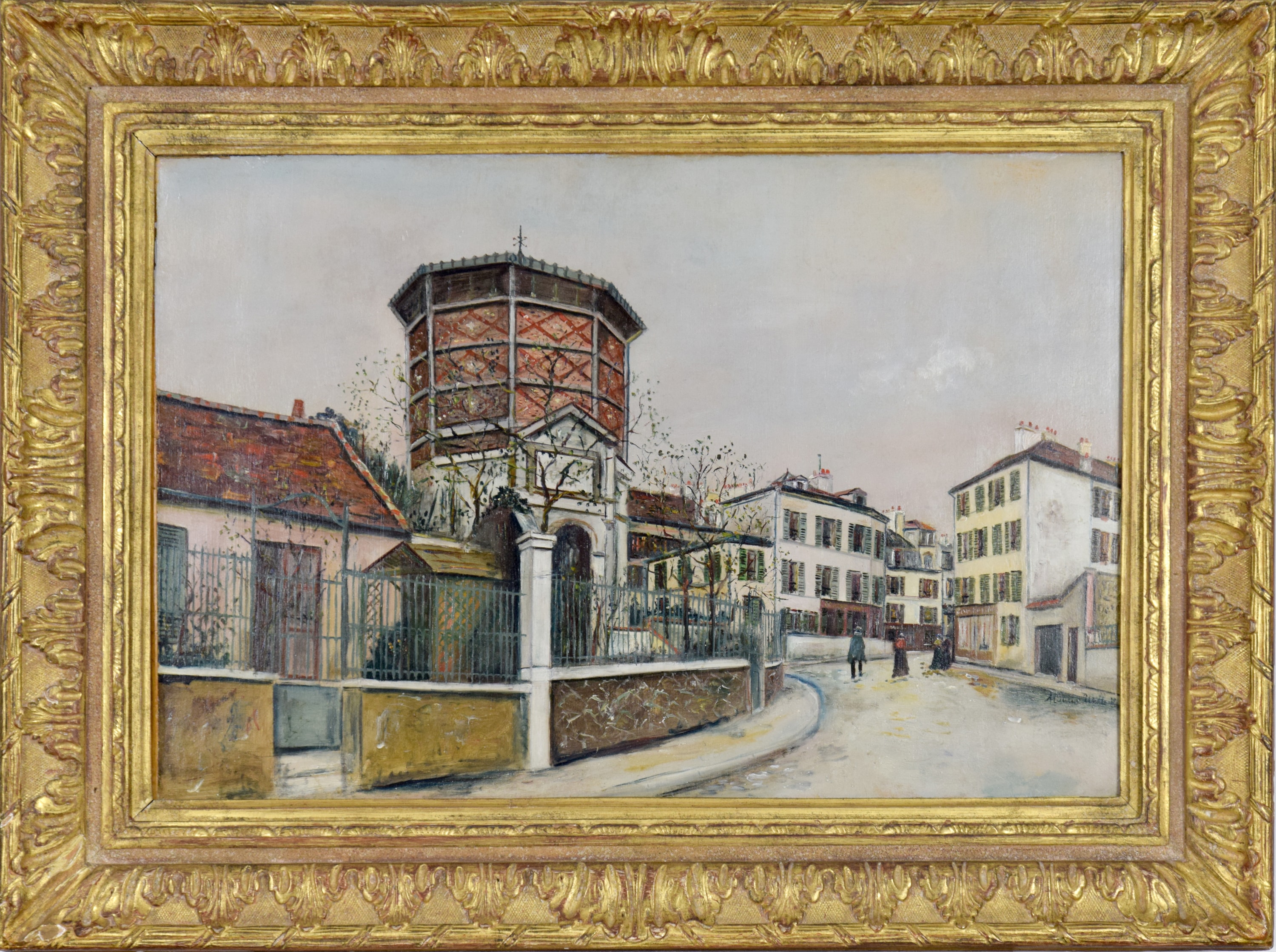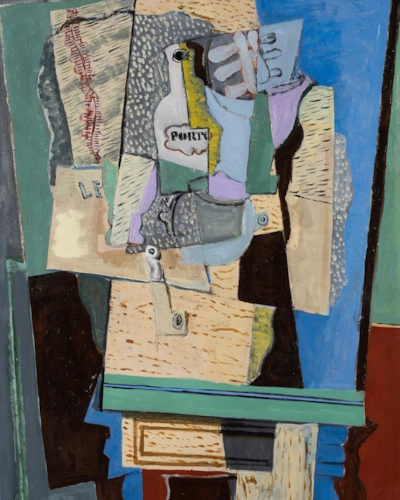Maurice Utrillo
1883 - 1955
Place Jean-Baptiste-Clément
51.3 x 76.2 cm (20¹/₄ x 30 inches)
Signed towards lower right, Maurice. Utrillo. V.
Executed circa 1918

Weill Collection, Zürich
Galerie Römer, Zürich, no. 53
Private Collection, Zürich, acquired from the above in 1963, until at least 1982
Private Collection, thence by descent
Painted circa 1918, this Utrillo oil depicts Place Jean-Baptiste-Clément, a street located in the heart of Montmartre, Paris. During the twentieth century, Montmartre was known for being an artistic and intellectual hub, home to artists such as Pablo Picasso, Amedeo Modigliani and André Derain. Utrillo was born in the district and remained there for the majority of his life, using a muted colour palette to capture the streets of his neighbourhood. His mother, Suzanne Valadon, was an artist herself and had modelled for the likes of Degas, and Renoir – both of whom were rumoured to have been Utrillo’s father. Consequently, Utrillo was surrounded by art for the entirety of his life, becoming an established figure amongst modernist circles.
He became revered for his metaphysical approach, which involved capturing the rigidity of the architecture and melancholy of the streets. As illuminated in Place Jean-Baptiste-Clément, Utrillo focused upon structure within his paintings and favoured a pronounced sense of space. He gives the architecture a strong presence, rendering elements such as the wrought-iron fence and shutters with precision. The prism-shaped building is likely to be the old reservoir, which while having a new roof, remains on the site in Paris today. His inclusion of people in the distance, not only emphasises Utrillo’s interest in perspective but gives the work an emotional weight and provides a subtle sense of narrative. When including figures within his work, Utrillo would often depict them in transit or position them away from the foreground. He uses their anonymity in combination with the soft tonal quality to create a sombreness.
Realised circa 1918, this painting was executed during the last year of Utrillo’s ‘White Period’, where he used zinc white abundantly and often mixed plaster into paint. This method allowed him to produce his very specific urban landscapes and contributed to his rendering of texture and architectural detailing. The rawness invoked by the method, emphasised the imperfections of the city street and allowed him to thoroughly engage with the mood in Paris during the First World War. It was during the late 1910’s that he was painting fervently and solidifying his reputation as a respected artist.
Despite his life-long battle with alcoholism, Utrillo achieved a remarkable amount, exhibiting at the Salon d’Automne and Salon des Indépendants, and receiving the Légion d’Honneur in 1928. Considered one of the pioneers of The School of Paris, Utrillo is seen as a central figure to Parisian bohemianism and today, his work can be found in collections across the globe. As such, he is highly collectible internationally, with a strong following, particularly in Asia.
This original work of art by Maurice Utrillo is available for sale.
Maurice Utrillo
biography
Often the subject of his mother’s work, Utrillo was trained as an artist by her in the Montmartre studio they would share. As a young man, he became imbued with the spirit of artistic fervour then sweeping the radical and diverse circle of artists centred on Montmartre that included Pablo Picasso, Amedeo Modigliani and André Derain. Taking the Parisian street as his inspiration, Utrillo soon distinguished himself as a painter of modernist ‘genre’ scenes. Attracted to the shabby and often ignored back-streets of Montmartre, with his muted colour palette and curiously ‘primitive’ sense of perspective Utrillo’s iconic streetscapes possess a mysterious, ‘metaphysical’ - and often ‘tragic’ - quality. Between the autumn of 1903 and the winter of 1904 he visited Montmagny, a village north of Paris and completed almost 150 sombre, impasto landscape paintings.
Exhibiting his work to great acclaim at the Salon d'Automne in 1909, Utrillo thereafter entered his ‘white period’ - often thought the peak of his career - characterised by layers of white impasto sometimes mixed with locally-manufactured plaster. It was the French art dealer Paul Guillaume - organising a large-scale exhibition of his work in 1922 – who launched Utrillo’s career and ensured his artistic legacy.
His deteriorating health led him gradually to withdraw from the streets of Montmartre into the relative safety of nursing homes. Here he developed the habit of painting from postcards. His stepfather, the painter André Utter, and his mother selected cards that reproduced his favourite views of la Butte Montmartre. He worked from these in their communal studio at 12 Rue Cortot, in the restaurant La Belle Gabrielle or in a bedroom above the Père Gay bistro and exacted his revenge on the locals, who had made his life difficult with their criticisms and jokes, by depicting them in his paintings in rear view as heavily outlined clumsy shapes and stereotyped silhouettes.
His late paintings are characterized by rich colors and strong black contours and are based almost entirely landscape themes. From 1937 onwards, his friend and dealer Paul Pétrides looked after him at the request of his family. Despite furious bouts of mental instability and alcoholism, Utrillo lived a long life and married at the age of fifty-two to the French artist Lucie Valore. He died - just short of his seventy-second birthday - and was buried in the now-famed district of his birth.
Maurice Utrillo
biography

you may also like
1883 - 1955
Rue à Sannois
53 x 78 cm (20 ⁷/₈ x 30 ³/₄ inches)
1892 - 1968
Paysage d'Annay-sur-Serein
54 x 65 cm (21 ¹/₄ x 25 ⁵/₈ inches)
1883 - 1970
Coquillage et réveil en rouge
33.5 x 46 cm (13 ¹/₄ x 18 ¹/₈ inches)





















